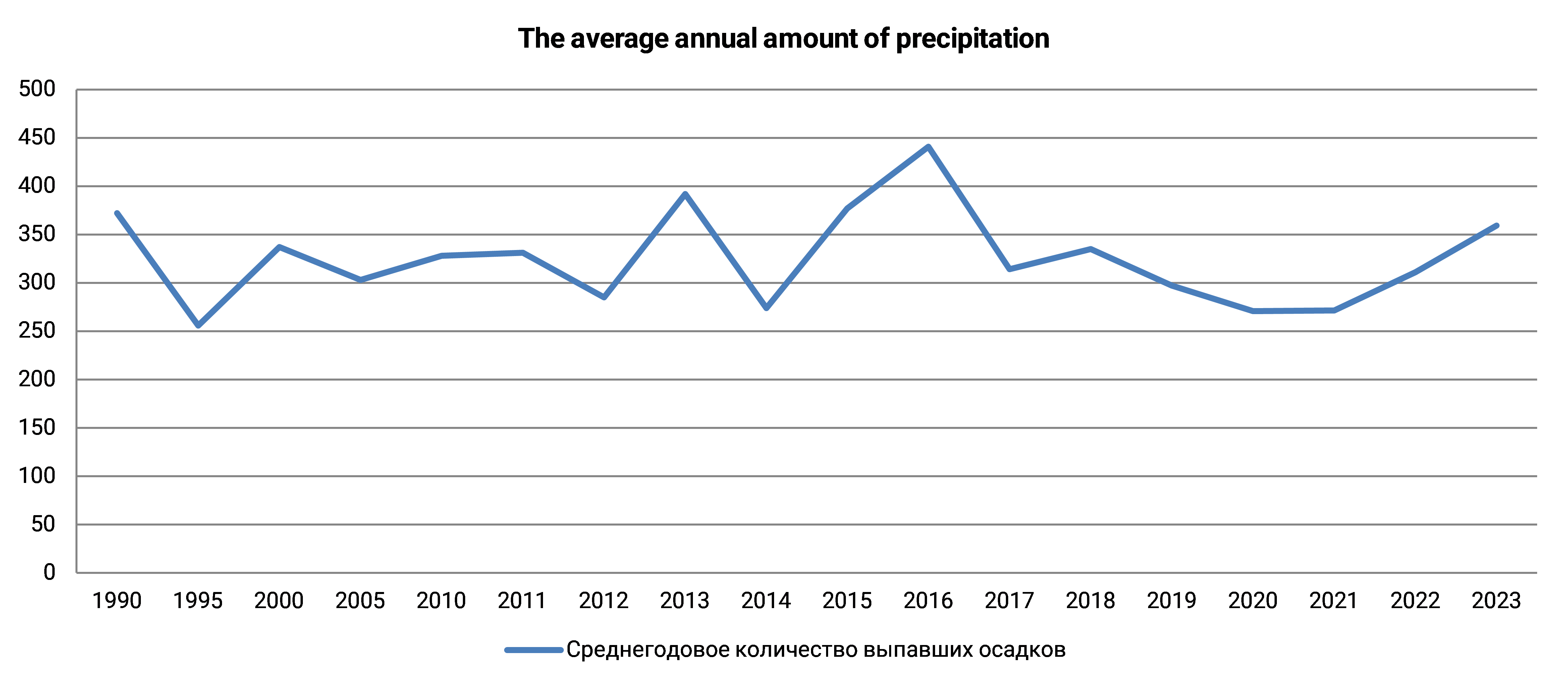The indicator characterizes the state of the climate system, as well as the impact of precipitation on changes in the volume of river flow, groundwater, and on soils, biota. The analysis of long-term observations of the main climatic characteristics, such as precipitation, air temperature and humidity, allows not only to judge the change in the structure of precipitation in a certain area, but also to assess the dynamics of changes in the amount of precipitation over the past period, predict such changes in the future, as well as evaluate the associated climate changes.

